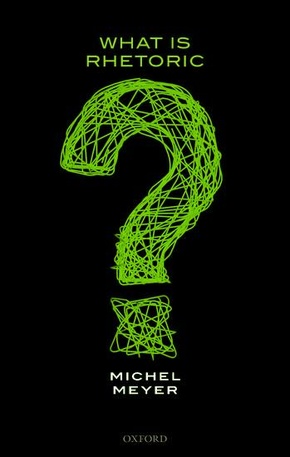| Verlag | Oxford University Press |
| Auflage | 2017 |
| Seiten | 268 |
| Format | 13,7 x 22,4 x 1,9 cm |
| Print PDF | |
| Gewicht | 436 g |
| Artikeltyp | Englisches Buch |
| ISBN-10 | 0199691827 |
| EAN | 9780199691821 |
| Bestell-Nr | 19969182EA |
This book offers a new unified approach to rhetoric, a means of persuading or influencing interlocutors. All the principal authors from Plato and Aristotle to contemporary theorists are integrated into Michel Meyer's 'problematological' conception of rhetoric, based on the primacy of questioning and answering in language and thought.
This book offers a new approach to the principles and functioning of rhetoric. In everyday life, we often debate issues or simply discuss questions. Rhetoric is the way in which we answer questions in an interpersonal context, when we want to have an effect on those with whom we are communicating. They can be convinced or charmed, persuaded or influenced, and the language used can range from reasoning to the sharing of narratives, literary or otherwise. What is Rhetoric? provides a breakthrough in the field, offering a systematic and unified view of the topic. The book combines the social aspects of rhetoric, such as the negotiation of distance between speakers, with the theory of emotions. All the principal authors from Plato and Aristotle to contemporary theorists are integrated into Michel Meyer's 'problematological' conception of rhetoric, based on the primacy of questioning and answering in language and thought.
Inhaltsverzeichnis:
Introduction
1: The basic features of the history of rhetoric
2: The question-view of logos
3: Rhetoric and argumentation: the unity of the field
4: The common operators in figures and arguments
5: The argumentative structures
6: The elements of rhetoric ^istricto sensu: the figures of speech
7: The foundations of literary rhetoric
8: The rhetoric of the arts
9: The role of ethos: the voice of values
10: The role of pathos: from argumentative responses to feelings and emotions
11: The negotiation of distance or the embodiment of the interpersonal
Conclusion
Glossary

